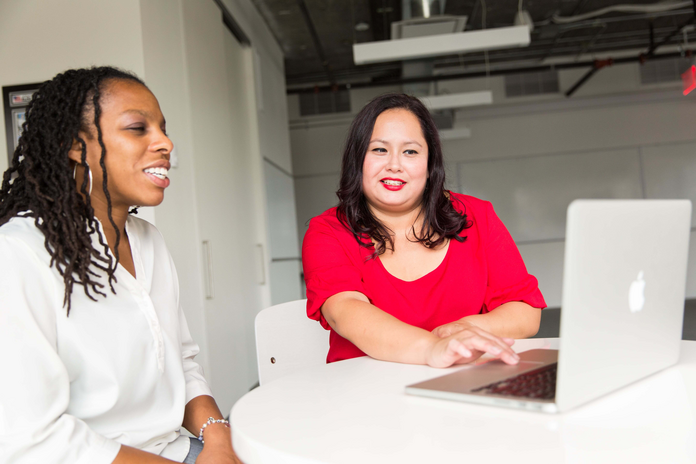“She runs our board, she is in charge and she is so well connected. If you complain to CCMA [Commission for Conciliation, Mediation and Arbitration] your name as a social worker will be tarnished”.
These are the words so poignantly shared by Laylah, a social worker, to demonstrate the power dynamics between herself and her manager at the NGO she works for. The complaint that would be filed against her manager, Kim, would be centred on the racial discrimination faced by Laylah and the other people of colour within the organization. Examples of racial discrimination experienced within the NGO are demonstrations of ‘soft racism’, often in the form of racial microaggressions. In the social work field – one that is centred around community engagement and, arguably, empathy – it seems strange to imagine (especially in this so-called ‘post-apartheid’ South Africa) that these issues are still so persistent. What this case study shows is that learned behaviours and ‘soft racism’ is sowed deeply and thus, is difficult to weed out.
It is important to acknowledge the positionality of those involved in this case study. Laylah’s manager, Kim, is a white, Afrikaans womxn and Laylah and her co-workers are coloured. I mention race not to create a division between races but to acknowledge the perpetrators of soft racism and the marginalised workers who are subjected to this form of discrimination based on the colour of their skin.
In my opening paragraph I mentioned two key concepts that must be understood before we are to go any further into unpacking Laylah’s working environment. The first is ‘soft racism’, taken from Eusebius McKaiser’s Run Racist Run. This is racism that “doesn’t manifest itself in the same overt way as the racism of someone who beats people up because of their skin colour” – it requires watching closely how the interactions between people of different races play out and then one can perhaps see the “soft, but clear abuse of power”. Racial microaggressions is a term that I am sure we’ve all come across and definitions can be found on Vox, CNN and in Ijeoma Oluo’s So You Want to Talk About Race.
Essentially, these are subtle comments that are actually insults, actions and indignities perpetrated against marginalised groups of people based on their skin colour. Thus, racial microaggressions are a form of soft-racism. Through using some aspects of Oluo’s framework of microaggressions we shall see how this ‘soft racism’ manifests in Laylah’s workplace.
Double Standard: Where is the support?
The support and respect given only to white workers within the organisation shows the ‘soft racism’ against Laylah and her co-workers. Laylah recounts the treatment of her white co-worker and herself, in annoyance. When her white co-worker, Maria, goes on leave, her time is respected as she is not contacted even when she is expected in court relatively soon. Should Laylah and her co-worker, Azraa, take leave, they are called and made to come into work. In one instance Azraa was told by Kim that if the magistrate were to have called and she was not present, that there would have been major consequences and she would not have dealt with it. When Maria was out and she actually had the magistrate call, Kim was more than happy to speak on her behalf and resolve the issue herself. There was no threat or consequence provided for Maria – unlike that provided for Azraa. There is a different attitude and disregard for coloured workers’ time than that of the white workers within the organisation. The support structures are only in place to protect white workers and not coloured workers.
The Excuses Keep Coming
As stated by Oluo, “microaggressions are small and can be easily explained away”. Additionally, these can manifest through action. As is the case with Laylah, her argument inducing suggestion on one of her cases about where to place a client based on the case information was criticised and denied. However, after a white co-worker took her place on the case – as she was moved to a separate section – and suggested the exact same solution, it was met with consideration and approval. Thereafter, Kim claimed not to have been ‘understanding’ the situation completely, thereby explaining away this microaggression. The truth behind this is that there is a level of legitimacy placed behind white voices as opposed to coloured voices. Why was Kim not fully engaged with Laylah’s suggestion as opposed to that of her co-worker?
Keeping Tally
“Microaggressions are cumulative” and they have a long-term effect. That means that each of Laylah’s manager’s actions is indicative of a toxic work environment that is riddled with microaggressions. Additionally, they can take a negative toll on victims’ mental health, cited from an article by Nadel et al. titled ‘The Impact of Racial Microaggressions on Mental Health: Counselling Implications for Clients of Color’ in So You Want to Talk About Race. This is evident as Laylah cites the palpable energy drain experienced by her and her co-workers when Kim enters the office. Additionally, Laylah speaks of being anxious and dreading going to work because of the interactions that she may have with her manager.
I Didn’t Know and I Don’t Want to
Laylah said herself, “I believe it’s not done consciously, at least I don’t want to believe it is”, this links to Oluo’s point that “many people do not consciously know that they are perpetrating a microaggression against someone”. The truth is: intention is difficult to prove, but the reaction and lived experience is what must be focused on. Kim clearly does not believe in any way she is being racist in her actions. She denies unfair treatment when casually brought up and claims work is distributed evenly. Though when one looks at the case distribution and work linked to it, this is not the case. The real issue lies with the fact, according to Laylah, that she is not open to, nor does she wish to, discuss changing things.
The Inerasable White Board: Diversity?
Laylah explains that the board of the organisation is all white, including her manager. But the areas and people that they are helping are not only white people. Laylah continues that the “people who sit on the board are not from our community or from the service delivery section”. Additionally, these are the people making the decisions on behalf of the entire organisation. They create the budget, and the only person of colour is the secretary – whom they tell to leave the room when they start discussions on the budget. Diversity is very necessary, especially for an organisation that is so directly tied to the community. Not to mention the implications of only white people being the ‘saviours’ of people of colour. The ties that Laylah’s manager has within the social worker community means that change is hard to come by and with someone that doesn’t want to acknowledge their flaws, it seems that change is a dream.
Laylah’s manager is an example of constant ‘soft racism’ and this case study goes to show how entrenched and difficult it is to combat – especially with the power dynamics at play within this example.
-
To protect the identity of those involved all names used are pseudonyms.


